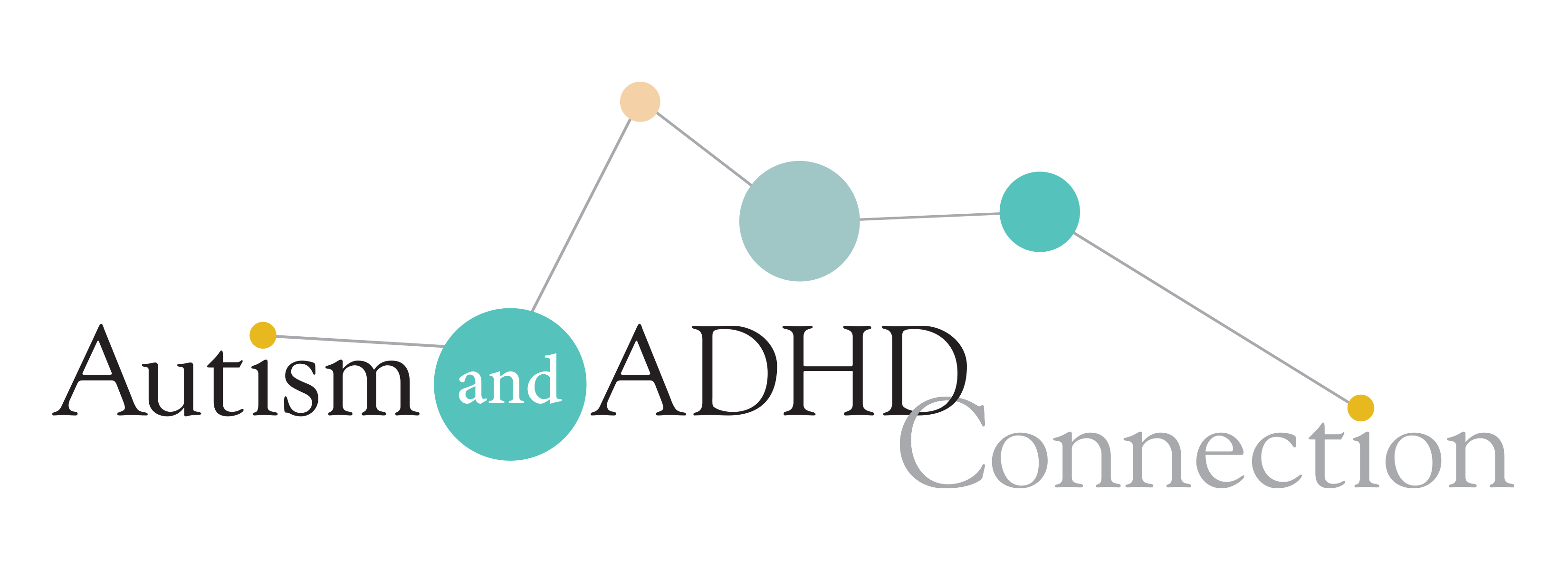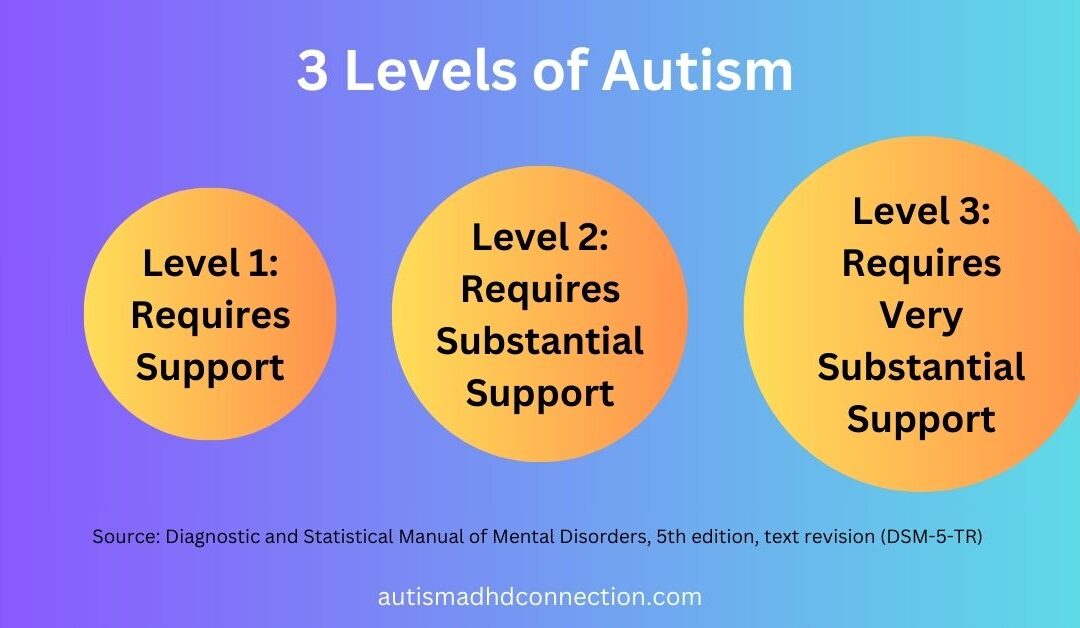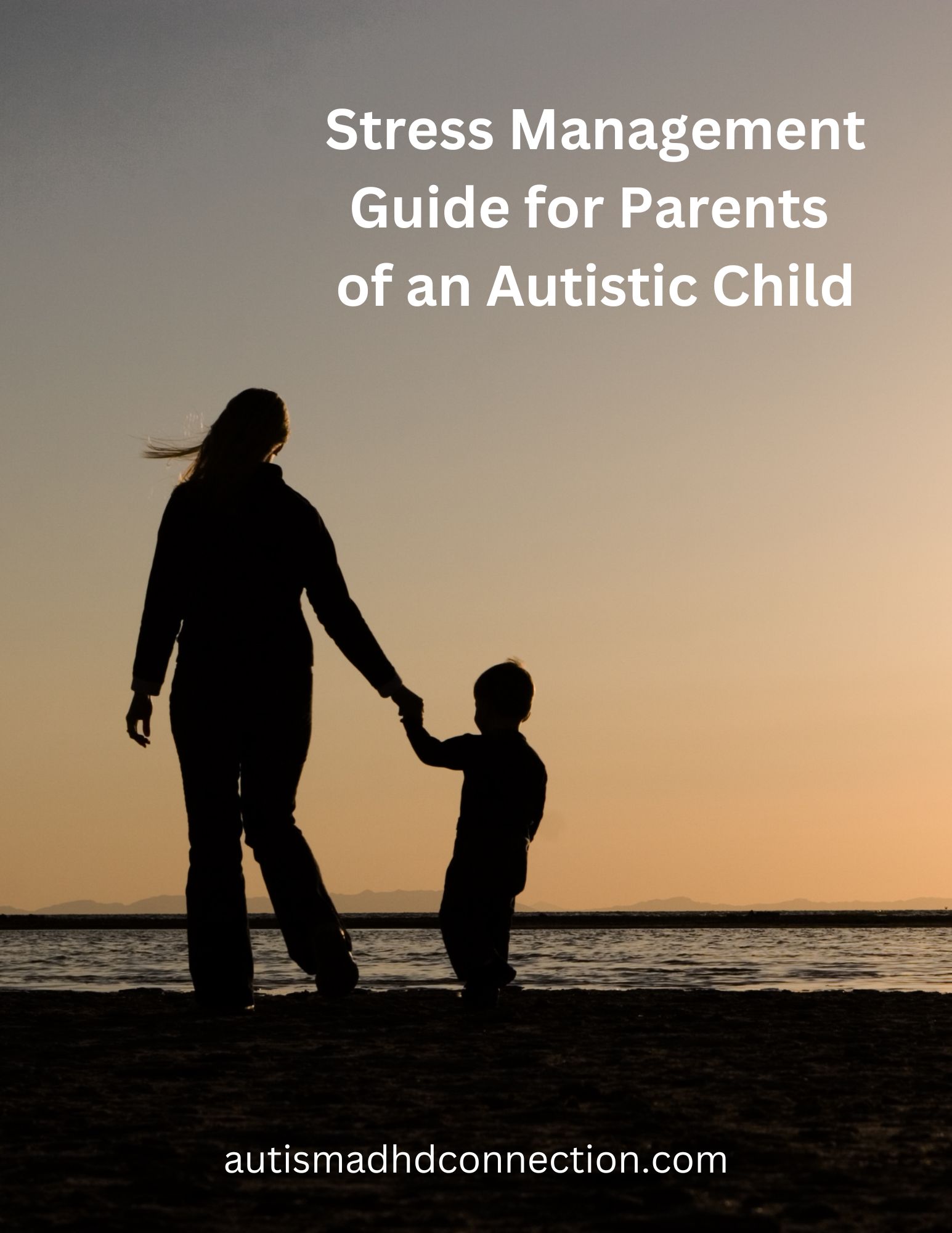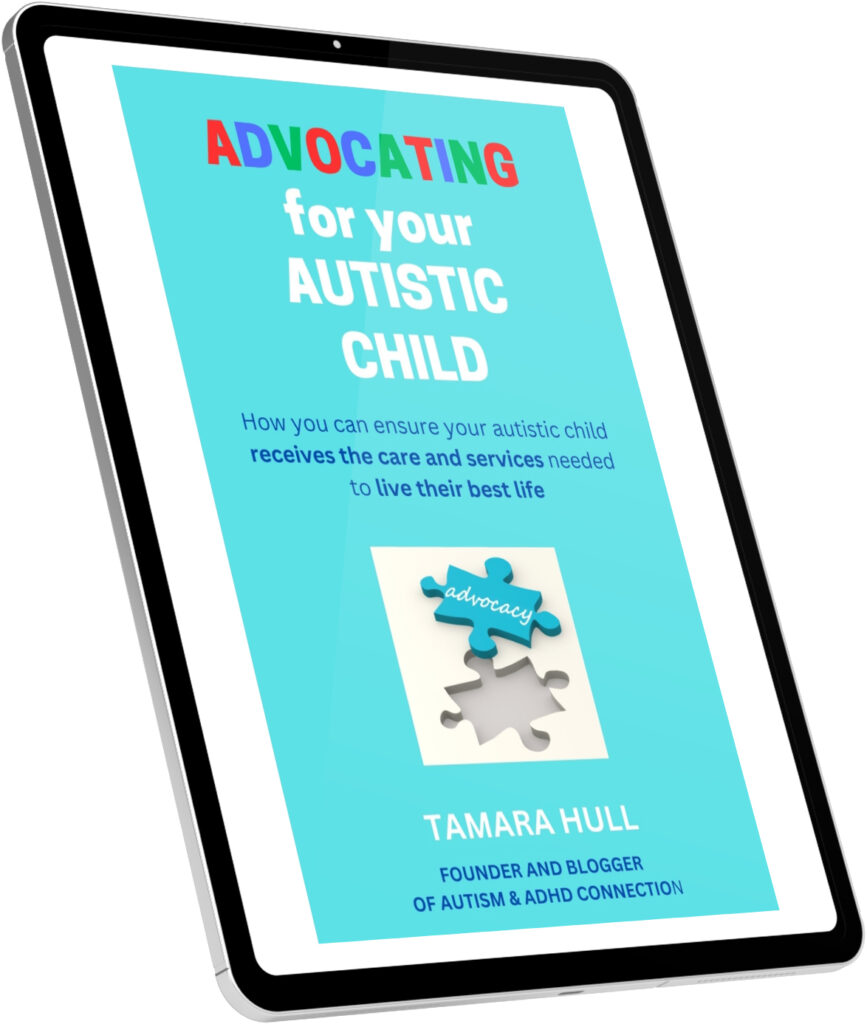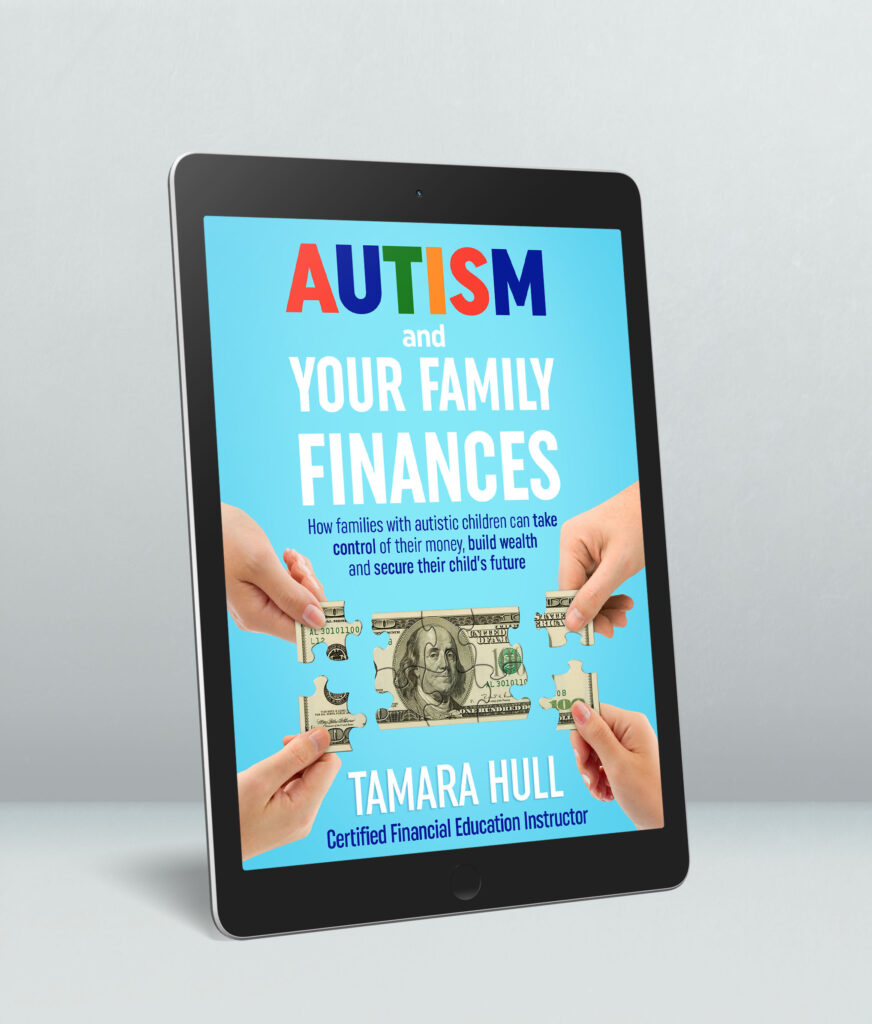Autism Spectrum Disorder includes a broad range of capabilities and abilities within individuals. You have autistics who are able to live a fairly “normal” life of obtaining higher education, having a successful career and developing, and maintaining good relationships (including marriage and children if that’s what they want). Then on the other side of the spectrum are those who cannot care for themselves and will always need others to take care of them. All the others are in between. As parents, sometimes it is difficult for us know where our own children fall on the spectrum, let alone explain it to family and friends. That is why I like the autism levels. It’s a better way to explain where my son is on the spectrum, both comprehending it myself and helping others to understand as well.
What are the autism diagnosis levels?
The Diagnostic and Statistical Manual of Mental Disorders, 5th Edition, defines Autism Spectrum Disorder with three levels to help healthcare professionals, parents, educators and others determine the amount of support and treatment or therapies a person on the spectrum needs. It’s not a perfect system, but it is better than trying to define the amount functionality an autistic person has.
Here are the three levels:
- Level One: Requires Support
- Level Two: Requires Substantial Support
- Level Three: Requires Very Substantial Support
What do the autism levels look like practically?

So, it’s great to have the autism levels, but what do they mean and how do they look in a practical sense to help you and your child’s doctor define where your child falls on the spectrum?
Autism Level One: Requires Support
Autistic children on Level One require some support but not a lot. This is where my son J falls on the spectrum. He was originally diagnosed with Asperger’s Syndrome (no longer its own diagnosis), so we used to note he was “high functioning.” Yet, that didn’t really accurately describe him because in some ways he was but in other areas he needed more help. We obtained that help for him through speech therapy during elementary school, occupational therapy, cognitive behavior therapy, medication and job coaching.
How does Autism Level One translate practically? Those on Level One generally:
- Need some help in improving their communications with those who are neurotypical, especially their peers
- Speak well, in complete sentences and comprehensively, but they tend to fatigue during long back-and-forth conversations with neurotypicals
- Tend to mask long-term to better fit into their environment (which can lead to autistic burnout)
- Have difficulty knowing the right thing to say or do in social situations
- Find they have a lack organizational and other executive function skills
- Focus on special interests
- Have some challenge in shifting from one activity to another and can be inflexible in actions and thought patterns at times
- Tend to persevere, or focus on something longer than necessary
- Experience some sensory issues
- Will usually become independent eventually, but it may look different than their neurotypical peers
Those on Level One will need some therapies and treatments to help them function and communicate better in the world. They also will need some accommodations at school to help them be more successful academically.
Autism Level Two: Requires Substantial Support
Individuals who are on Level Two require substantial support. Traits and abilities in these individuals can include:
- Have difficulty communicating in ways that neurotypicals understand, using fewer words and noticeably different speech patterns
- Socialize in ways that neurotypicals don’t comprehend, such as walking away from a conversation and many times missing facial and body language cues from others
- Are focused on very specific interests that may be considered strange or even bizarre by someone who is neurotypical
- Tend to have more challenge shifting from one activity to the next one
- Use more excessive stimming behaviors to self-regulate
- Have more substantial sensory issues
Those on Level Two will require more support than those on Level One. They will need more school accommodations, and additional therapy and treatment will be needed to help them function better.
Autism Level Three: Requires Very Substantial Support
Those on Level Three are more severe or profound in their autistic traits and have lower capabilities. Most autistic people who are Level Three will need others to care for them their entire lives.
Individuals on Level Three may:
- Be non-verbal or only use echolalia to communicate, which may require them to use an augmented and alternative communication (AAC) device to help them communicate
- Interact with others on a limited basis, mostly to have a need met
- Prefer to do things alone instead of with others
- Have significant social deficiencies and little interest in developing friendships
- Show more stimming needs such as rocking, spinning and other such behaviors
- Become distressed when switching tasks or activities
- Be unable to mask and fit in with others
- Have difficulty completing daily living activities by themselves
Autistic children and teens on Level Three are most likely to be in special education classrooms at school or even receive only one-on-one instruction to help with basic academic and more life skills. They also will benefit from a greater array of therapies and treatments.
Why are the levels better to use than functionality in explaining autism to others?

As a parent, I find using the levels can be better in explaining my son and his abilities to others. Trying to use high or low function to describe our autistic children’s capabilities is difficult. That is because they can be higher functioning in some areas, and then need much more support and considered lower functioning in other areas. And then what does high functioning or low functioning really mean and what about all the people who are in the middle of those two bookends?
So many people who aren’t educated about autism tend to rely on stereotypes they see in the media. I did my capstone project for my master’s degree on evaluating the types of descriptions that media use to characterize autistic individuals. My research showed three primary characterizations: patients, savants and victims. Even though “patients” were the most common type, the media primarily portrayed those with more Level Three autism in their stories. Being able to use these more defined levels can help parents better understand and explain where their child falls on the spectrum.
Using the levels is also how the medical community now determines the level of support a person needs. It can help you as a parent know more about the types of care and services you will need for your child.
Do you use the autism levels to better understand and explain to others about where your autistic child falls on the spectrum? What has been your experience? Leave a comment below so that we can share and encourage one another on this journey.
Additional resources
Looking for more information? Take a look at these resources available.
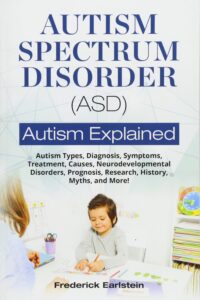
Not Atypical Motherhood: The Guide for Navigating a Child’s New Autism Diagnosis (affiliate link)
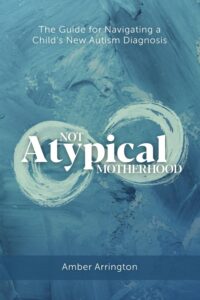
Talking with Your Child about Their Autism Diagnosis (affiliate link)
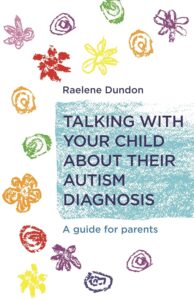
My Awesome Autism: Helping children learn about their autism diagnosis (affiliate link)

Navigating the Spectrum: A Guide for Autistic Parents of Autistic Children (affiliate link)

